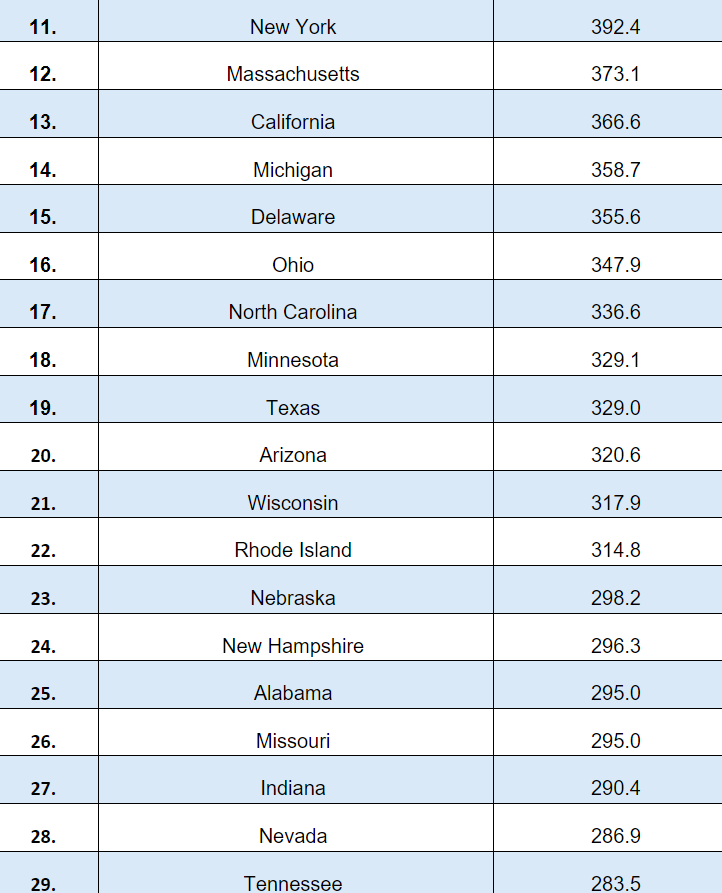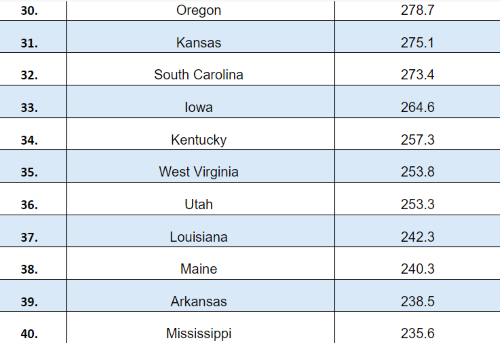Such home improvement projects also may have consumers thinking of how to update their furniture
HIGH POINT — A recent survey by storage solutions firm SpareFoot offers a glimpse into which states are the most interested in home remodeling projects this year.
The study used some 50 different search terms that individuals used to research home improvement projects online with terms such as home remodel, kitchen remodel and bathroom remodel among the most popular searches. The company then viewed these against state populations to determine where the interest was the highest over the past year.
Illinois showed the most interest in remodels with an average of 470 monthly searches per 100,000 residents, according to the study. It was followed by Colorado with 447 average monthly searches, Maryland with 426, Florida with 423 and New Jersey with 419.
Others in the top 10 included Connecticut with 405 monthly searches, Virginia with 402, Georgia with 401, Pennsylvania with 397 and Washington with 394.
Included in the 10 states with the least interest in remodels were Montana with 174 searches per 100,000 residents, Alaska with 186, South Dakota with 194, Idaho with 197 and Wyoming with 212. Others in that group included Vermont, with 226 searches, North Dakota with 229 searches, Oklahoma with 230, New Mexico with 231 and Hawaii with 232.

The other states falling somewhere in the middle can be seen in these companion charts shown at right.
The bathroom ended up being the room in the home with the most searches relating to remodels, while other terms such as kitchen remodel and basement remodel costs also turned up, according to the research. Other remodeling can include work done on the outside of the home.
At the heart of these projects is the desire to update an aspect of the home with something new, such as flooring, cabinets, fencing, landscaping and interior or exterior painting, for example, as opposed to renovating, which translates into bringing something back to its previous state, according to Ruby Home Luxury Real Estate. Regardless, the two activities can be placed in the broad bucket of home improvement, which often is spurred by a desire to update one’s home to current design trends, be it in wall paint colors or simply the latest in wood or tile flooring and cabinetry and even lighting.

Citing data from Houzz, Real Simple reported that the kitchen is the most commonly renovated room in the home (with 27% of homeowners taking this on), followed by the guest and primary bathroom at 25% and 23% respectively. The median spend for kitchen and primary bathroom projects increased in 2022 and rose again last year to $24,000 and $15,000, a 20% and 11% increase respectively.
It added that GenXers spent the most on such projects, and their median spend was $25,000 last year compared with baby boomers at $24,000. By comparison, the median spend was $15,000 in 2020.
This data suggests that homeowners have a continued interest in investing in their homes now and in the future. And while furniture retail sales have faltered over the past year or more, sales will likely return as homeowners seek to complement these remodeled settings with new furniture. For the bathroom, that could mean a new vanity sink or storage cabinet for towels and other linens; for the kitchen, it could mean a new dining set and for the newly repainted den or family room, it could mean a new sectional.
The list of possibilities goes on. Thus for retailers, the opportunity lies in seeing what types of projects are taking place in their communities and enticing consumers in their markets to further beautify their newly remodeled and/or renovated homes with new furniture.
As we’ve reported previously, home improvement stores such as Lowe’s and Home Depot are already tapping into this market, thus upping competition in the marketplace. The message? Home improvement also means new furniture.
But such competition is good overall in that it continues to raise awareness about home furnishings. For furniture retailers, that also means further opportunity to capture sales in their backyards that are rightfully theirs.










.jpg)





